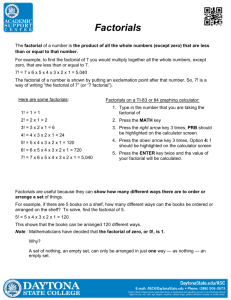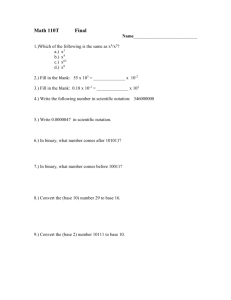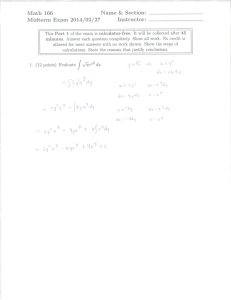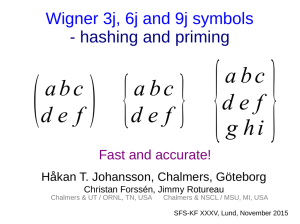Document 13500794
advertisement
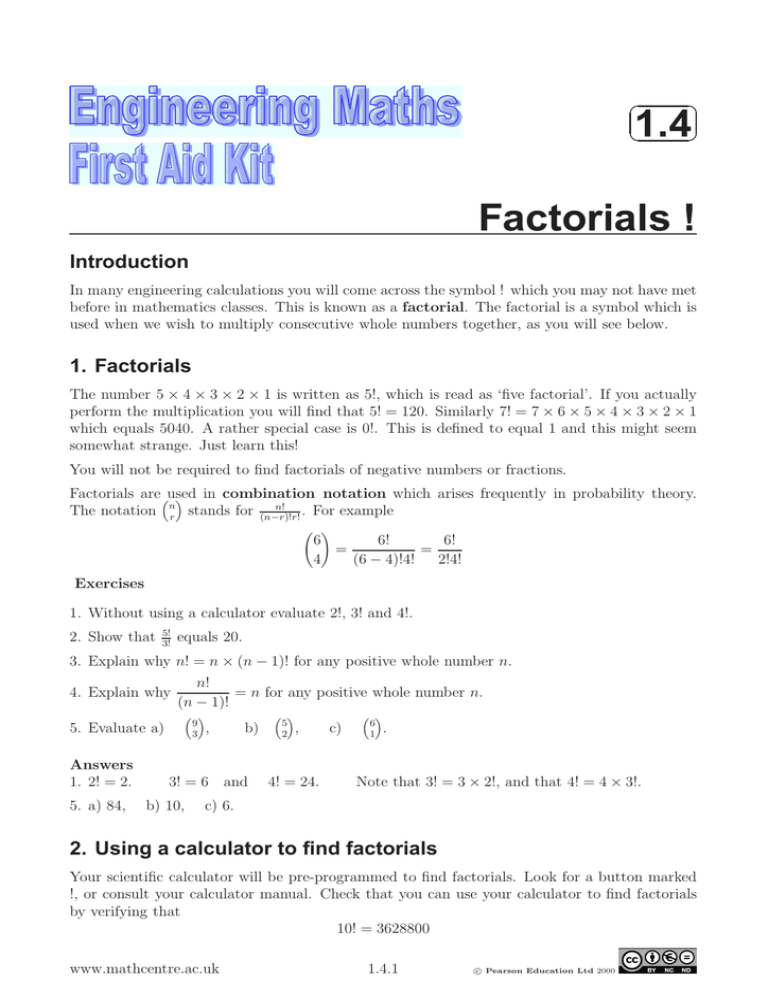
1.4 Factorials ! Introduction In many engineering calculations you will come across the symbol ! which you may not have met before in mathematics classes. This is known as a factorial. The factorial is a symbol which is used when we wish to multiply consecutive whole numbers together, as you will see below. 1. Factorials The number 5 × 4 × 3 × 2 × 1 is written as 5!, which is read as ‘five factorial’. If you actually perform the multiplication you will find that 5! = 120. Similarly 7! = 7 × 6 × 5 × 4 × 3 × 2 × 1 which equals 5040. A rather special case is 0!. This is defined to equal 1 and this might seem somewhat strange. Just learn this! You will not be required to find factorials of negative numbers or fractions. Factorials are used in combination notation which arises frequently in probability theory. n n! . For example The notation r stands for (n−r)!r! ! 6! 6 6! = = 4 (6 − 4)!4! 2!4! Exercises 1. Without using a calculator evaluate 2!, 3! and 4!. 2. Show that 5! 3! equals 20. 3. Explain why n! = n × (n − 1)! for any positive whole number n. 4. Explain why 5. Evaluate a) Answers 1. 2! = 2. 5. a) 84, n! = n for any positive whole number n. (n − 1)! 9 3 , b) 3! = 6 and b) 10, 5 2 , 4! = 24. c) 6 1 . Note that 3! = 3 × 2!, and that 4! = 4 × 3!. c) 6. 2. Using a calculator to find factorials Your scientific calculator will be pre-programmed to find factorials. Look for a button marked !, or consult your calculator manual. Check that you can use your calculator to find factorials by verifying that 10! = 3628800 www.mathcentre.ac.uk 1.4.1 c Pearson Education Ltd 2000


